How to make chicken karaage with MasterChef winner Tim Anderson
Find out how to make the ultimate chicken karaage, aka Japanese crispy chicken thighs
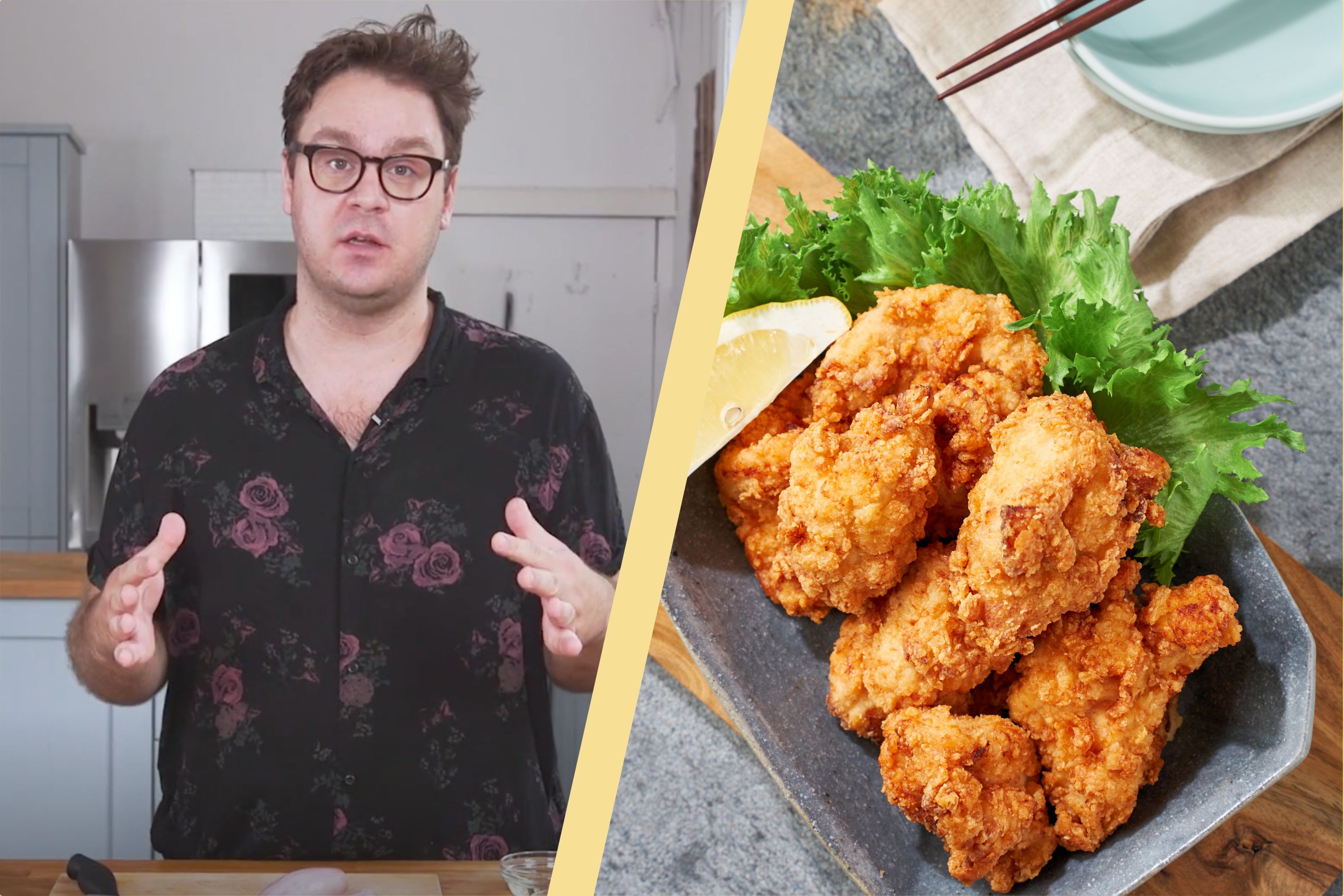

Simple as it sounds, there’s way more to chicken karaage than plain old fried chicken. A filling, Japanese soul food, it is – according to Tim (and he’s an expert) ‘is the best friend chicken recipe you can make – it’s got a crunch to juicy chicken ratio, it’s nugget size pieces, and it’s super easy.’ Tims makes his by infusing succulent chicken thighs in a complex marinade of spices and other delicious ingredients, before coating them in his own creation – a seasoned batter made with cornflour and an array of Japanese ingredients tp pack in as much flavour as possible. Yes, it’s fried but – trust us – KFC this is not.
At Tim’s former restaurant, Nanban in London, the dish was served with a sprinkling of lime juice to add a tangy freshness to the chicken without overpowering the flavours. We also recommend serving it with a hearty dollop of Kewpie mayo, which is sort of mayo on steroids that can be bought in large supermarkets, Japanese or Asian supermarkets or online, as well as some of the other ingredients in the recipe.
This mouthwatering recipe serves four people – and it really is the perfect sharing food – but you can scale the measurements up or down as required.
Preparation
The key to a successful chicken karaage is the marinade. You can marinate for 1-2 hours but if you can prepare 24-48 hours in advance you’ll notice an extra depth of flavour.
As Tim suggests, use a big, deep pot or a deep fat fryer – the sides of your pot should come up much higher than the level of your oil, so if it does bubble up it shouldn't overflow.
And when it comes to frying chicken, cooking thermometers really are our best friend. Making sure the oil reaches 160°C helps the karaage develop a golden-brown crust, while a meat thermometer lets you check the inside of the meat (you're looking for an internal temperature of 65°C), so you know it’s cooked through yet still juicy.
Watch Tim make these succulent, Japanese-inspired chicken thighs
Ingredients
- 4 chicken thighs, boneless and skin on
- Cooking oil for deep frying, such as rapeseed
For the marinade
Sign up to our free daily email for the latest royal and entertainment news, interesting opinion, expert advice on styling and beauty trends, and no-nonsense guides to the health and wellness questions you want answered.
- 3tbsps mirin
- 3tbsps rice vinegar
- 100ml sake
- 3tbsps lime juice (or yuzu juice of you can get it)
- 2tbsps sriracha or similar hot chilli sauce
- 2tbsps soy sauce
- 1tbsp sesame oil
- 10 cloves garlic
- 4 shallots or 2 banana shallots
- 15g ginger (peeled weight), thinly sliced
- ½tsp salt
- ¼tsp white pepper
For the seasoned flour
- 250g cornflour
- 1tsp white pepper
- 1tsp salt
- 1tsp sesame seeds (black, white, or a mix)
- ½tsp dashi powder
- ¼tsp chilli powder
- ¼tsp dried ginger
Method
Step 1
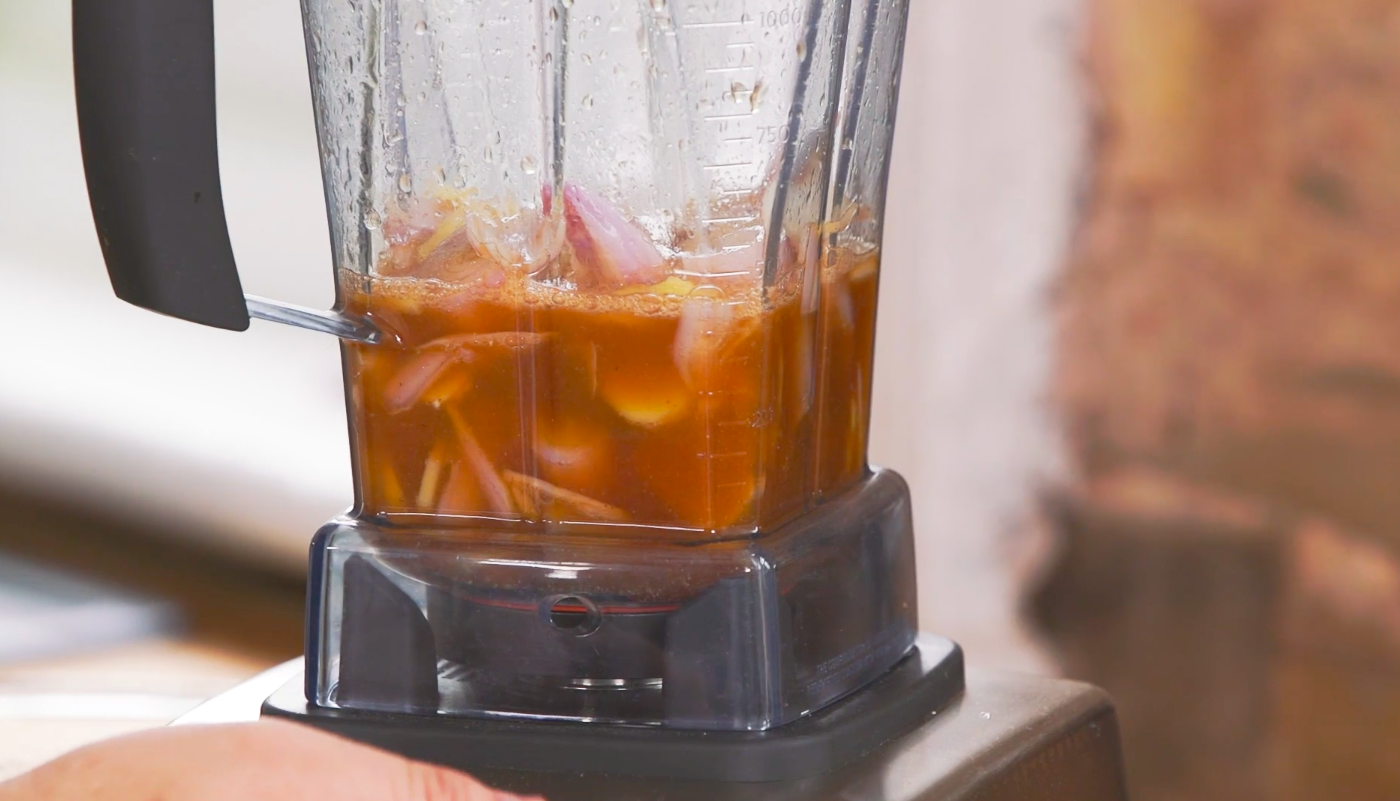
For the marinade, whizz all the ingredients together in a food processor until no big chunks remain (it doesn’t have to be perfectly smooth).
Step 2
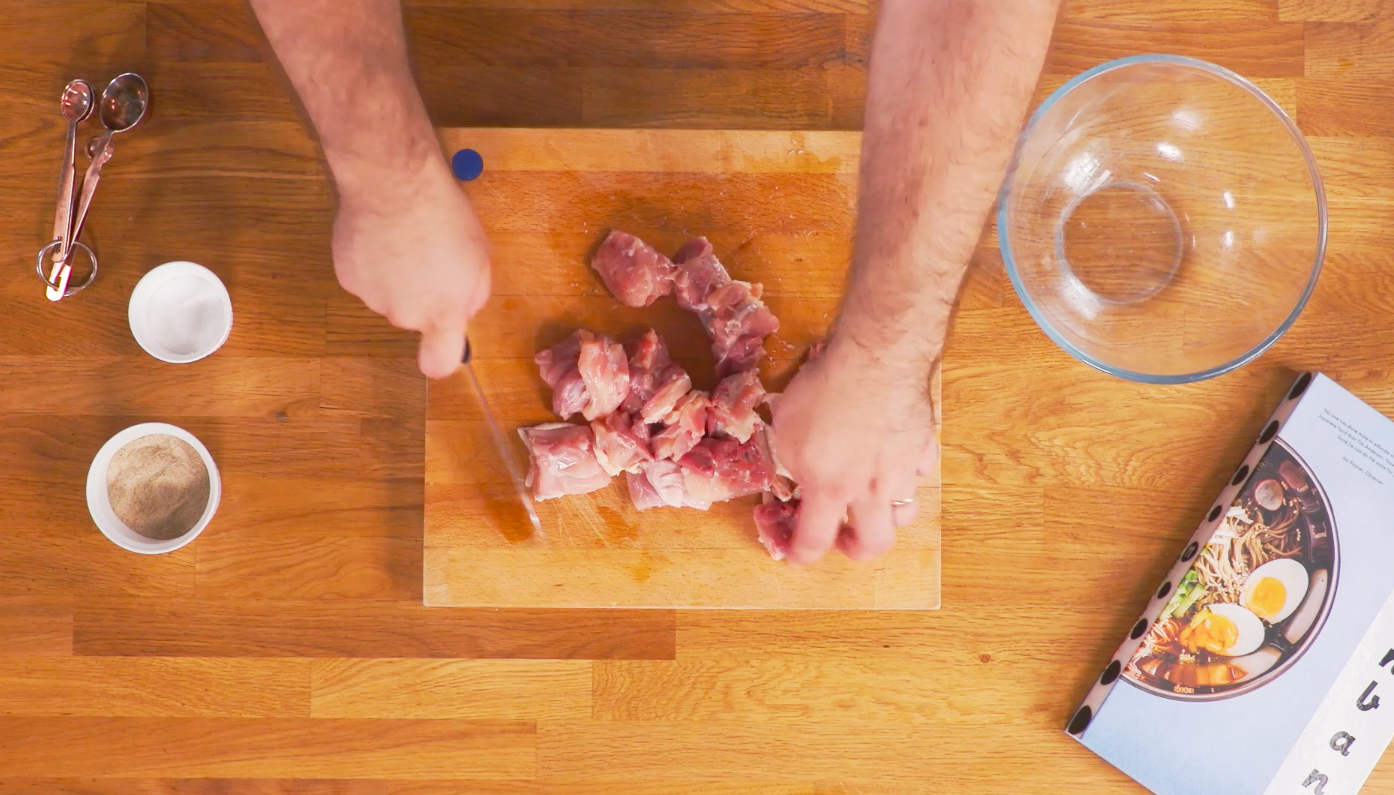
Cut the chicken thighs into pieces no bigger than about 3cm at their thickest point – most thighs will yield 4 pieces, but you should get 5 or 6 out of bigger ones.
The main thing to bear in mind is that they need to cook quickly, before the crust begins to burn. Basically, you should err on the side of small.
Step 3
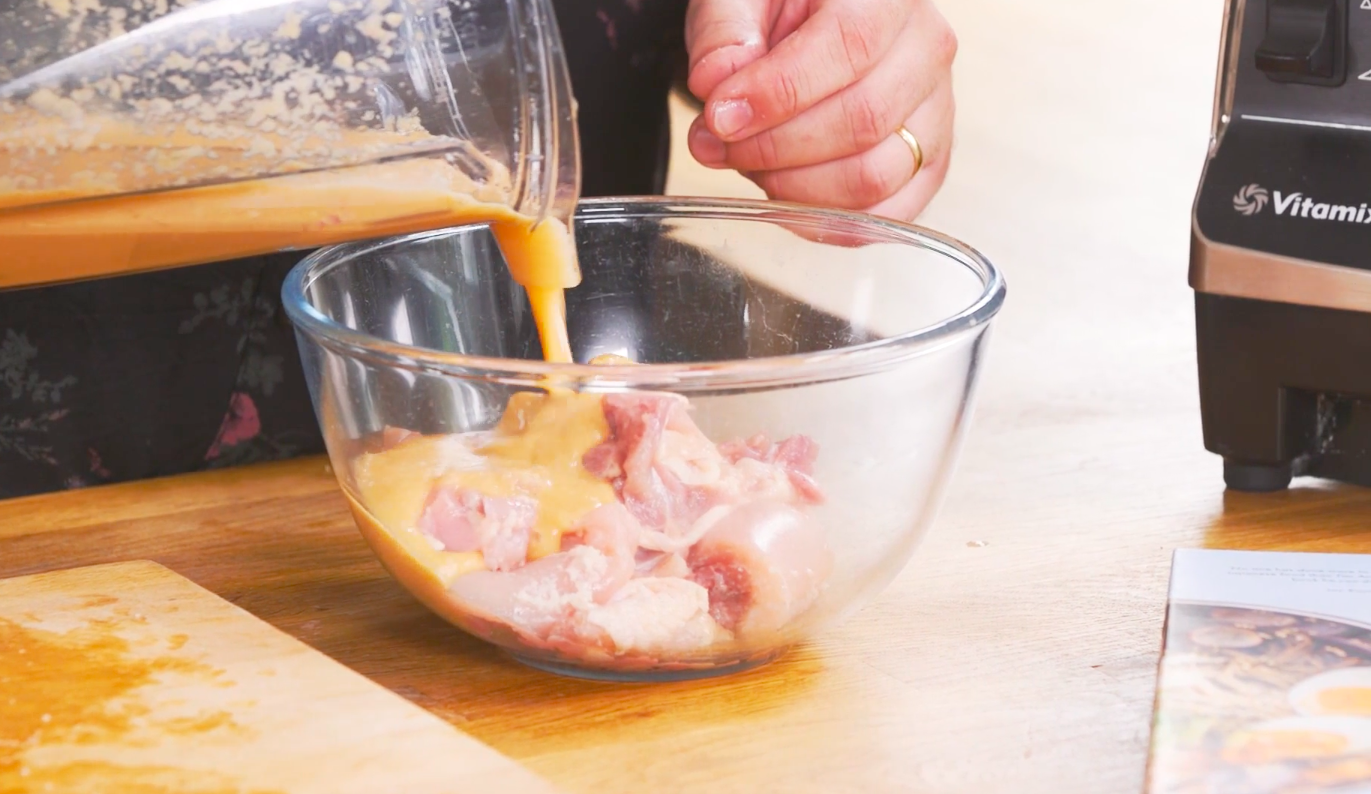
Cut the chicken thighs into 4 even pieces (it may be 3 for smaller thighs, or 5 for bigger ones). Add the marinade and coat the chicken well. Leave in the fridge for at least an hour and up to 48 hours.
Step 4
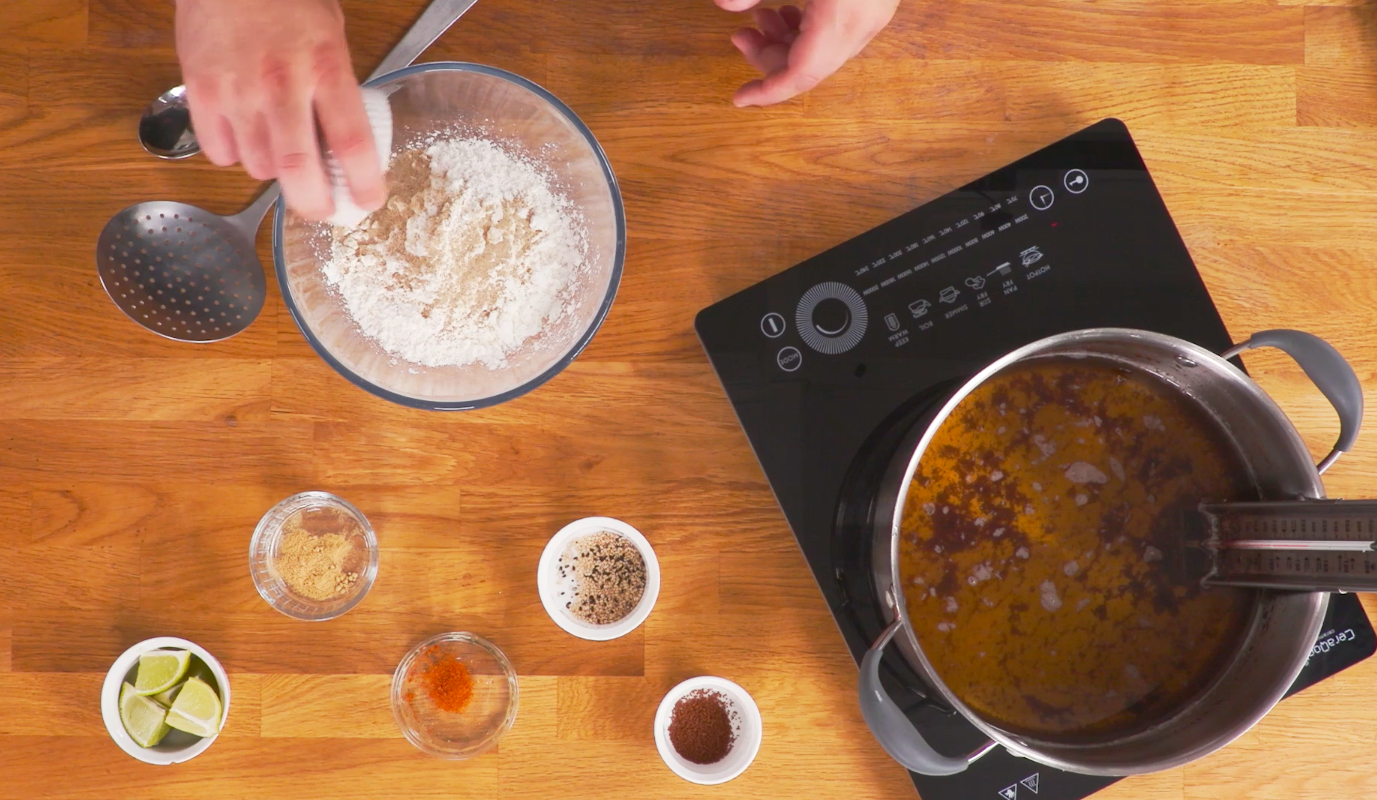
For the seasoned flour, combine all ingredients until well distributed. Remove the chicken from the marinade, letting any excess drip off, and dredge in the seasoned flour ensuring that all the nooks and crannies are well coated – this will help maximise crust and minimise burning.
Step 5
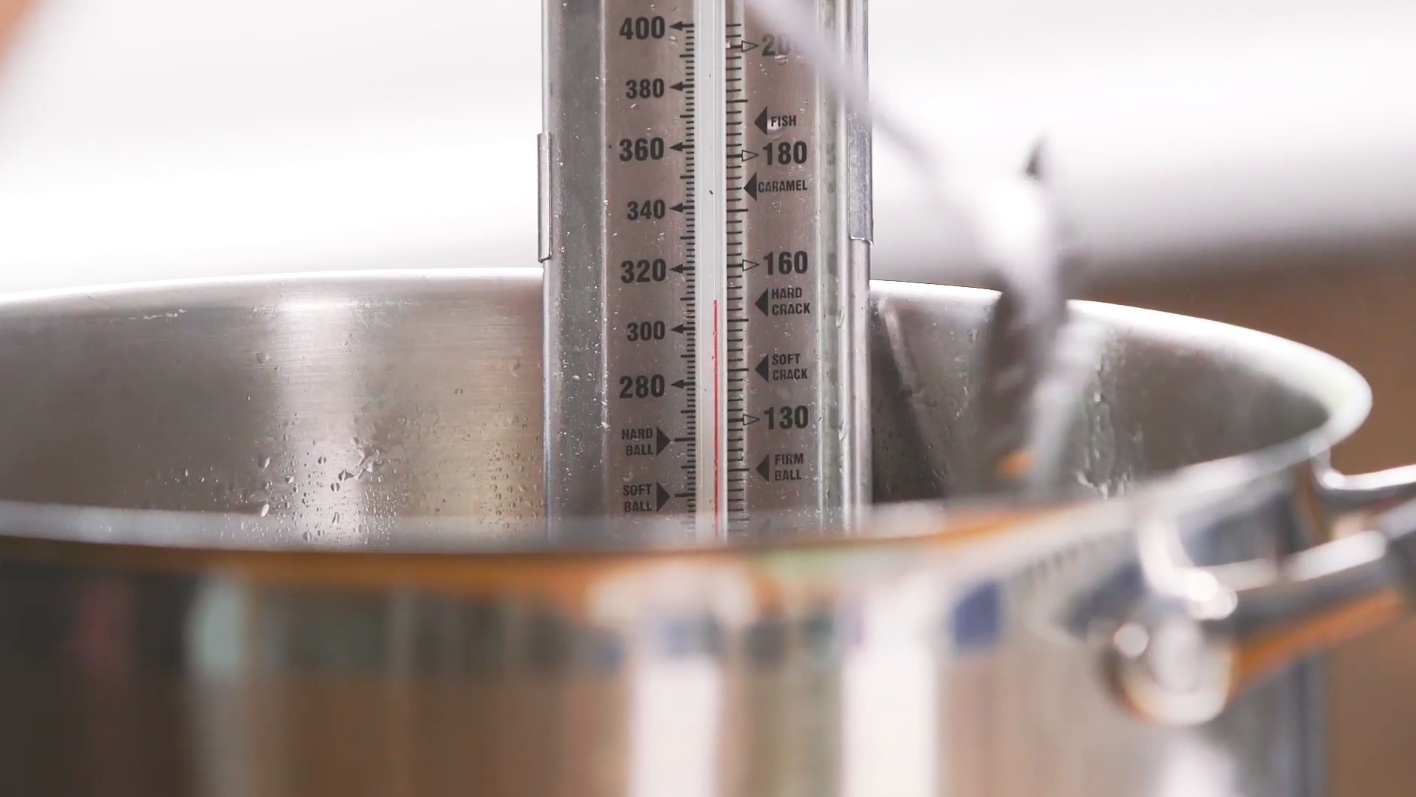
To cook, heat at least 1 litre of cooking oil in a deep pan and heat to 160°C. Shake off any excess flour from the chicken pieces then carefully drop them into the oil in small batches so they don’t stick together, checking the temperature periodically to ensure it is hovering around the 160°C mark. Fry each batch for 6-7 minutes. Don’t worry about the cooked chicken losing its crunch – it will stay crisp.
Step 6
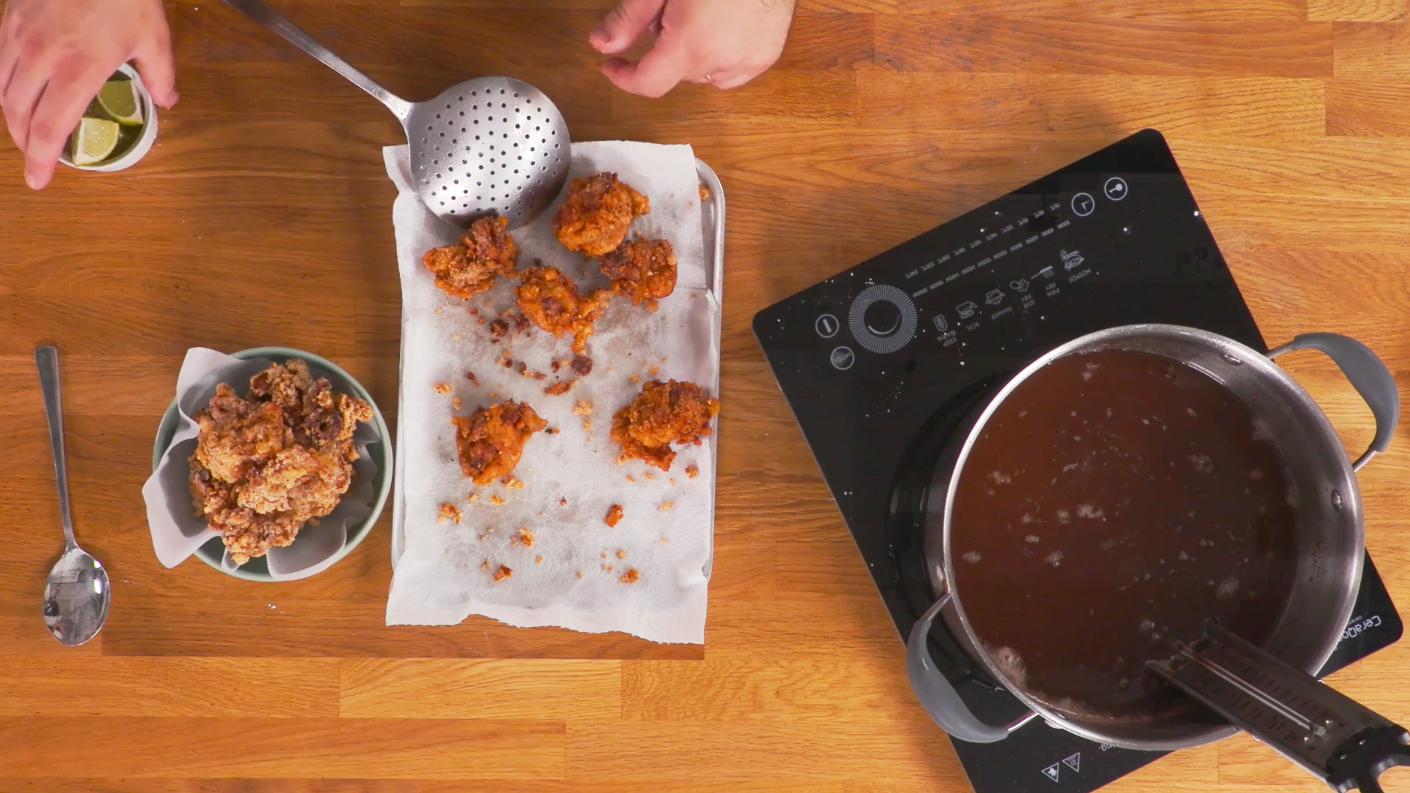
If you have a meat thermometer, use it: the chicken is done when it reaches an internal temperature of 65°C.
If you don’t have a thermometer, use a knife to cut into the biggest piece of chicken at its thickest point. If it’s pink, back into the oil it goes. If it’s not pink and it’s hot to touch, it's time to serve. Remove the chicken from the oil and drain on kitchen towels.
Step 7
It’s time to serve. It's perfect as is, but you could also add a wedge of lemon or lime, or some mayo.
FAQs about cooking chicken karaage
Do I have to deep fry chicken karaage?
Traditionally in Japan, a deep fryer is used, but you can use an oven or air fryer If you want to make dish a bit healthier. Here’s how:
To oven bake:
1. Prepare the chicken.
2. Preheat your oven to 220°C.
3. Put your chicken pieces onto a baking tray.
4. Place the tray in the oven for 20 minutes.
5. Remove from the oven and immediately serve with a slice of lime or Kewpie mayo.
To air fry:
1. Prepare the chicken.
2. Preheat your air fryer to 200°C.
3. Place the chicken pieces into the fryer basket and spray a little oil over them.
4. Cook for 10 minutes.
5. Take one out and check it’s cooked through by inserting a sharp knife into the middle for 3 seconds then pulling it out to see if the knife is hot. If it is, the chicken is ready. If not, give the thighs another 5 minutes.
6. Remove from air fryer and serve immediately with a slice of lime or Kewpie mayo.
Can I reheat chicken karaage?
Fried food is generally best eaten hot, straight after being cooked but you can reheat leftovers if you can’t resist the leftovers (and who can blame you?)
Preheat your oven to 200°C, place the pieces on a baking sheet and bake for around 15-20 minutes, so that they are hot on the inside but crisp on the outside. The exact baking time will depend on the size of your pieces, so we recommend using a meat thermometer or the knife test we describe above.
You can also reheat chicken karaage in an air fryer. Preheat your air fryer to 190°C, place the chicken in the basket and air fry on each side for 2 minutes.
While pretty much anything can be reheated in a microwave, we wouldn’t recommend it for chicken karaage. You won’t get the crispiness back, and it’s partly this which makes it such a treat to eat.
If you're reheating your chicken karaage from frozen, the rule is to not let it defrost before cooking. This will cause the chicken to thaw and release moisture and degrade. Instead cook them from frozen by preheating your oven to 190°C. Place the pieces onto a foil-lined baking sheet and bake for 35 minutes until each piece is completely reheated. If you feel some pieces may need longer to get that desired crispy effect, bake them for a few more minutes.
Can I eat karaage leftovers?
Once cooled, store leftovers in an airtight container or cover them well with cling film. The more protected they are the better. Leave them in fridge for up to 3 days; you can also freeze for about 4 months. If the fried chicken has been left at room temperature for longer than 2 hours, it’s safer to bin it, according to EatingWell.
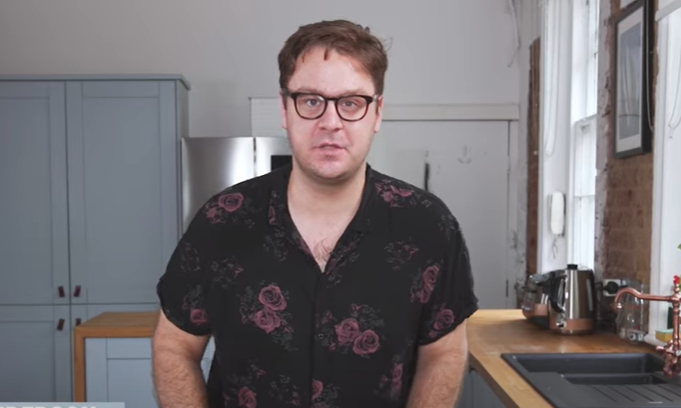
Tim Anderson is an American-British chef, who specialises in Japanese food and gastronomy. Previously executive chef and owner of Nanban, which had branches in Brixton and Covent Garden, he's also author of numerous cookbooks on Japanese cuisine, including Nanban: Japanese Soul Food, JapanEasy, Tokyo Stories, Vegan JapanEasy and Your Home Izakaya.
Tim's career took off when he won MasterChef in 2011. Since then, he's developed a career not only as a professional chef, but as a restaurateur, writer and radio and TV personality. He's featured as a panelist on BBC Radio 4's The Kitchen Cabinet, and has contributed to articles in The Guardian, National Geographic Traveller, The Telegraph, Newsweek, and Vittles.
Debra Waters is an experienced online editor and lifestyle writer with a focus on health, wellbeing, food and parenting. Currently, she writes for Woman&Home, NOON, and Psychology Now. Previously, Debra was digital food editor at delicious magazine and MSN. She’s written for Everyday Health, Great British Chefs, loveFOOD, M&S Food, Time Out, The Big Issue, The Telegraph, What to Expect, Woman and Woman’s Own. Debra is also an essayist and short story writer.
You must confirm your public display name before commenting
Please logout and then login again, you will then be prompted to enter your display name.
